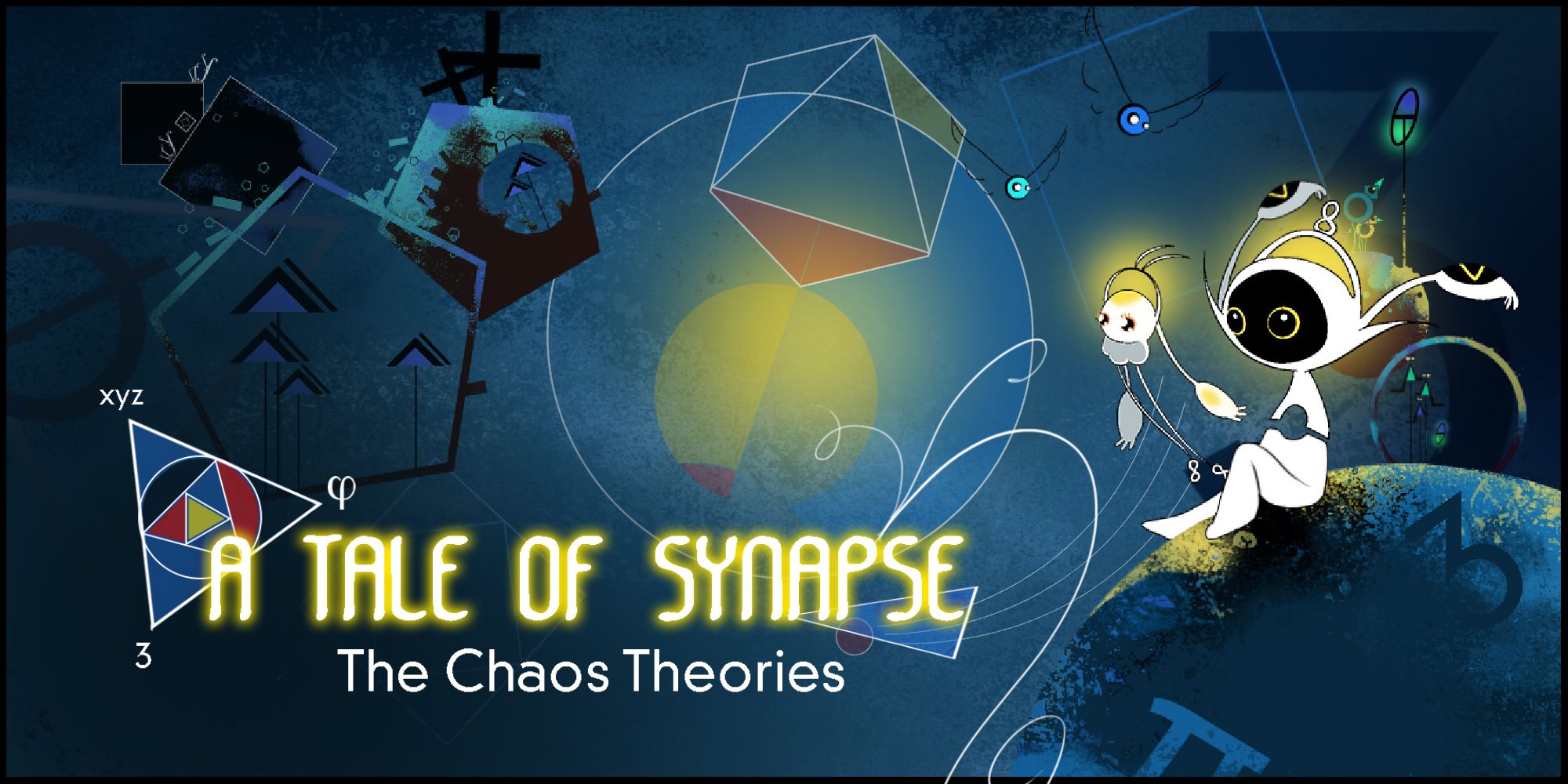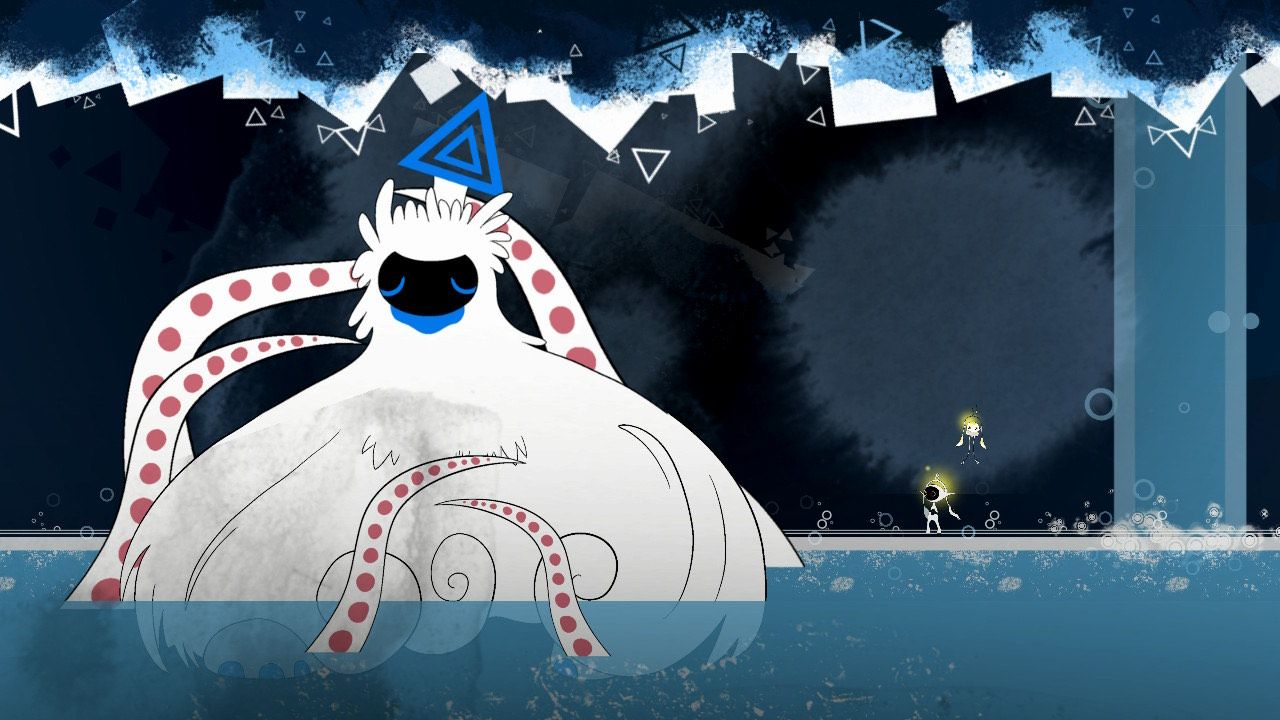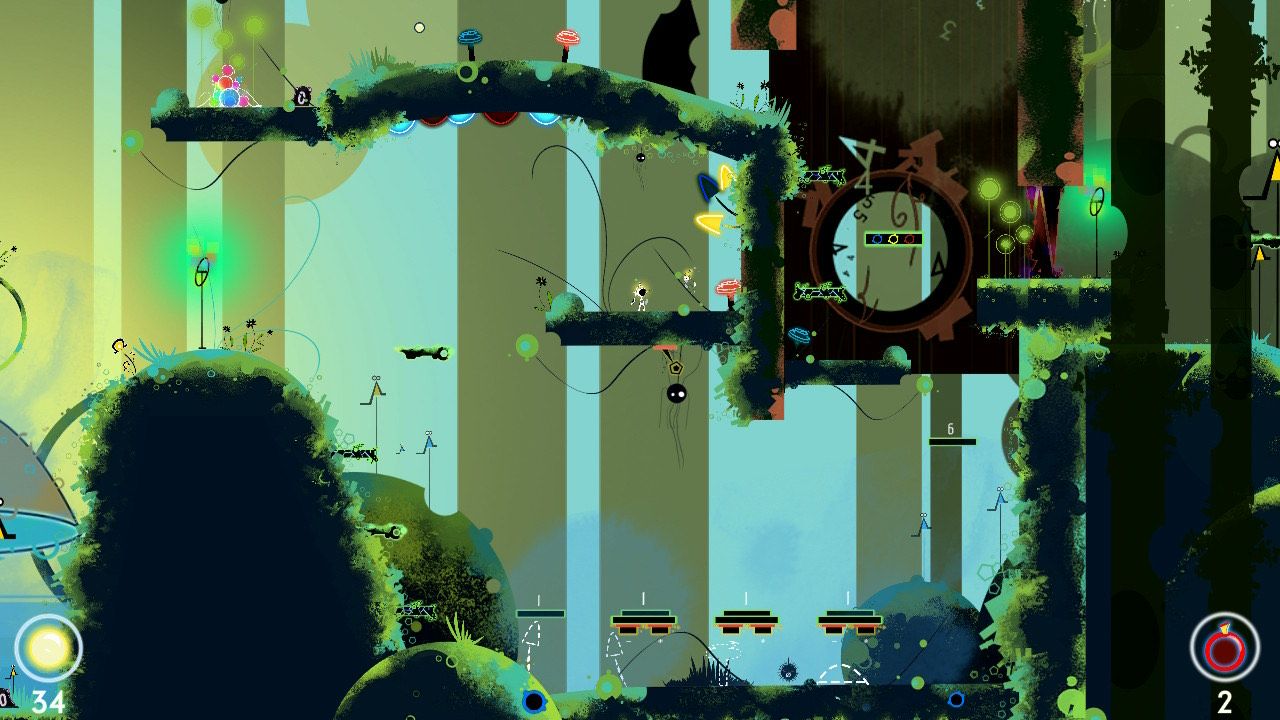The puzzle platformer genre has proved to be a successful place for indie developers. Allowing small studios to explore big ideas, games such as Braid and Fez set an early template for what has become a somewhat oversaturated genre in the last decade. Nonetheless there are games that still manage to stand out from the crowd, and this is what developer Souris-Lab is trying to do with A Tale of Synapse: The Chaos Theories.
The heroes of A Tale of Synapse: The Chaos Theories are Sci and Néro, who inhabit the world of Hemeide. There, the duo must progress through four different worlds, taking on a variety of math-based puzzles along the way as well as more traditional platforming. Playable in single player or cooperative play, Sci and Néro have different skills that will be useful in their journey.
The most striking aspect of A Tale of Synapse: The Chaos Theories is its visual design. Its mixture of rigid shapes, pastel colors, and flowing cartoonish character models creates a truly unique pop-out effect that works extremely well when the game's camera is zoomed in. There are issues with the game at a wider view, however, with its complex design appearing cluttered and its individual components hard to make out.
The camera has issues beyond making the game's visuals less than clear, however. The player doesn't have control of the camera, with it automatically zooming in and out depending on Néro's location while Sci teleports back into view should the second character get too far away. Since this means the view can stretch or shrink outside of what the player finds helpful it can be a bit frustrating, particularly when added to occasional clipping issues where the player might not land on a platform correctly.
This visual issue doesn't impede on the quality of the game's puzzles, however. A Tale of Synapse: The Chaos Theories doesn't throw arbitrary difficulty at the player, with a solid learning curve as the game progresses and enough variety to stop the user from repeating themselves. The game is heavily focused on math, meaning that a bit of logic goes a long way to finding success.
That said, the quality of the puzzles does not always transfer over to the platforming elements of A Tale of Synapse: The Chaos Theories. Moving through the levels can sometimes be very fiddly thanks to the game's controls, with a particularly infuriating habit of double-jumping without the player meaning to. Meanwhile, combat with enemies can be hit and miss, in part because their sprites don't stand out, but moreso because of nebulous attack timing and hit boxes.
The quality of the game's controls do vary depending on how many people are playing, though. In two player co-op, A Tale of Synapse: The Chaos Theories is at its best, with one player moving Sci around for the moments when they are needed and Néro dictating the bulk of the play - it's not It Takes Two, but it's still enjoyable. In single player the game doesn't quite work as well, as it can feel clumsy to use each analog stick for each character.
A Tale of Synapse: The Chaos Theories is a mixed bag overall. Visually it's extremely impressive, and when the player is able to focus on the game's puzzles it's an immersive head-scratcher. However, its struggles with platforming and combat, alongside its camera issues, means that the title ends up as a good idea not entirely successful in its implementation.
A Tale of Synapse: The Chaos Theories is out now for PC and Nintendo Switch. Screen Rant was provided with a Switch download code for the purposes of this review.



